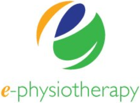Dance Injuries
Dancers frequently have pain and dysfunction in many different joints. This is due to the demands placed on their body which require extremes of flexibility, control, coordination, strength and endurance. Many dancers are hyper-flexible as this helps them to move their bodies into the extremes of range that they require for some forms of dance. [...]
De Quervain’s Tenosynovitis
De Quervain's is an overuse injury of tendons of the thumb, specifically the extensor pollicis brevis and abductor pollicis longus. There is usually pain with grasping and when moving the thumb away from the rest of the hand. It is common in nursing mothers from holding the head of their child for extended periods of [...]
Dislocations / Subluxations / Joint Instability
The most common joints for dislocations or subluxations are the shoulder, the knee cap (patella) and fingers. Some disolcations are from trauma, usually from contact sports, and can happen to anyone. These usually require the assitance of a physiotherapist or doctor to help self reduce/relocate the joint. Other people who are hyperflexible can sublux (partially [...]
Muscle Tears
Muscle tears can happen spontaneously, due to trauma or sport and leisure activites. The most common area for Spontaneous muscle tears is in the shoulder rotator cuff, especially as people get older. Calm muscle (gastrocnemius and soleus) tears are commonly caused during sports such as running or athletics. They can even happen with walking, more [...]
Muscle Weakness
Weakness can occur in muscles after injury or gradually from postural & movement habits. Common muscles affected by weakness are: Deep neck flexors (Longus Capitis & Longus Colli) Shoulder rotator cuff muscles (Infraspinatus, Supraspinatus, Subscapularis), Scapula muscles (Serratus Anterior Spinal core muscles (Transversus Abdominis & Lumbar Multifidus) Hip abductors (Gluteus Minimus & Medius), Hip external [...]
Orthopaedic Conditions or Post Orthopaedic Surgery
Joint replacements, fractures (with or without internal fixation), arthroscopy (key hole surgery), anterior cruciate ligament repair, knee meniscal repairs, shoulder rotator cuff repairs, and spinal surgery can all benefit from input from a physiotherapist. Gradually increasing the complexity of exercises post surgery can help you return to your activites of daily living (ADLs) and sport. [...]

